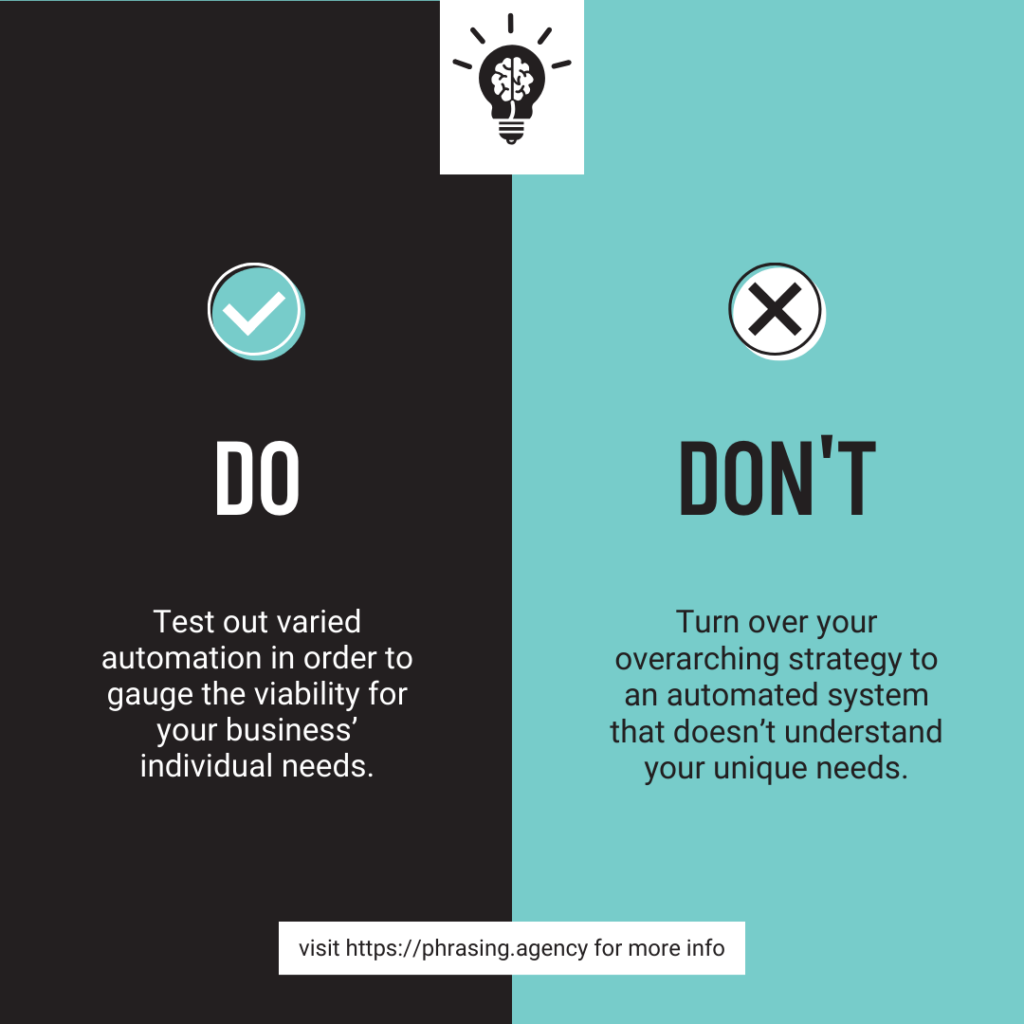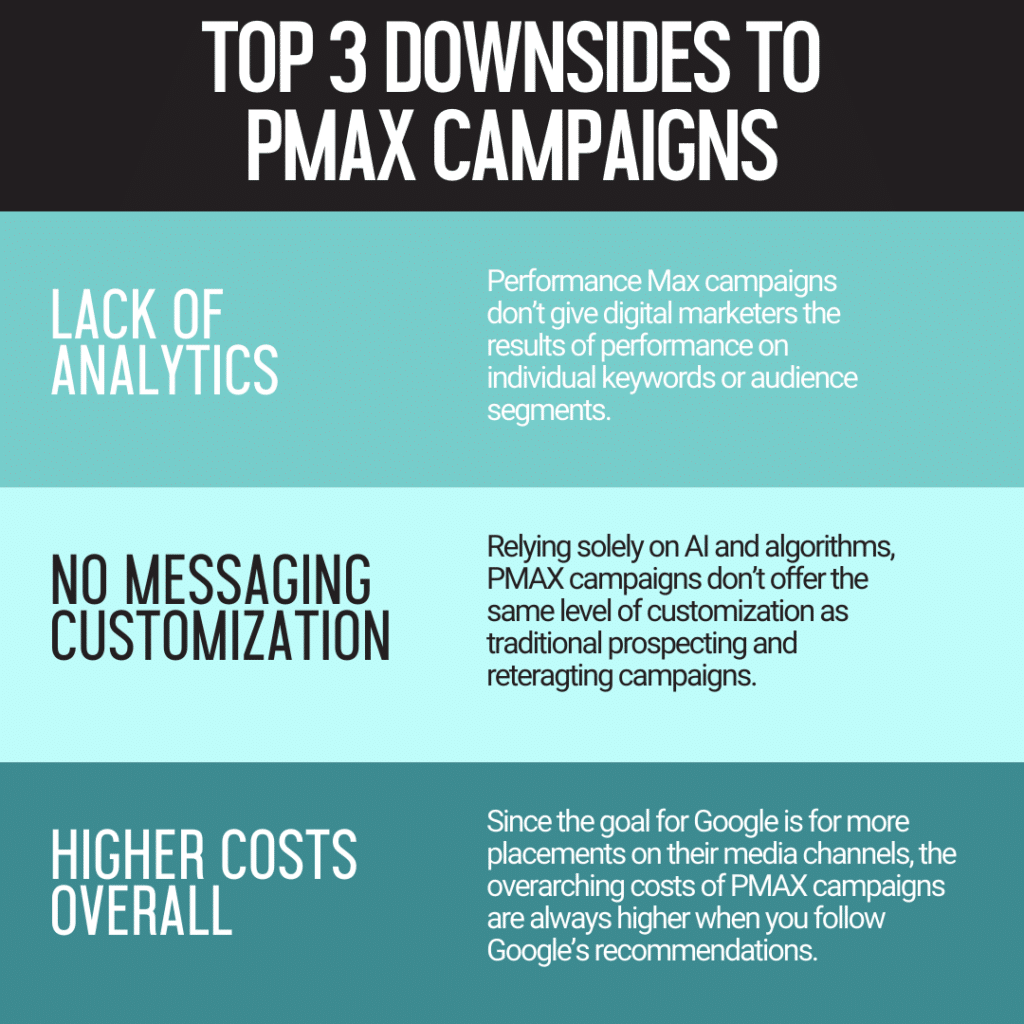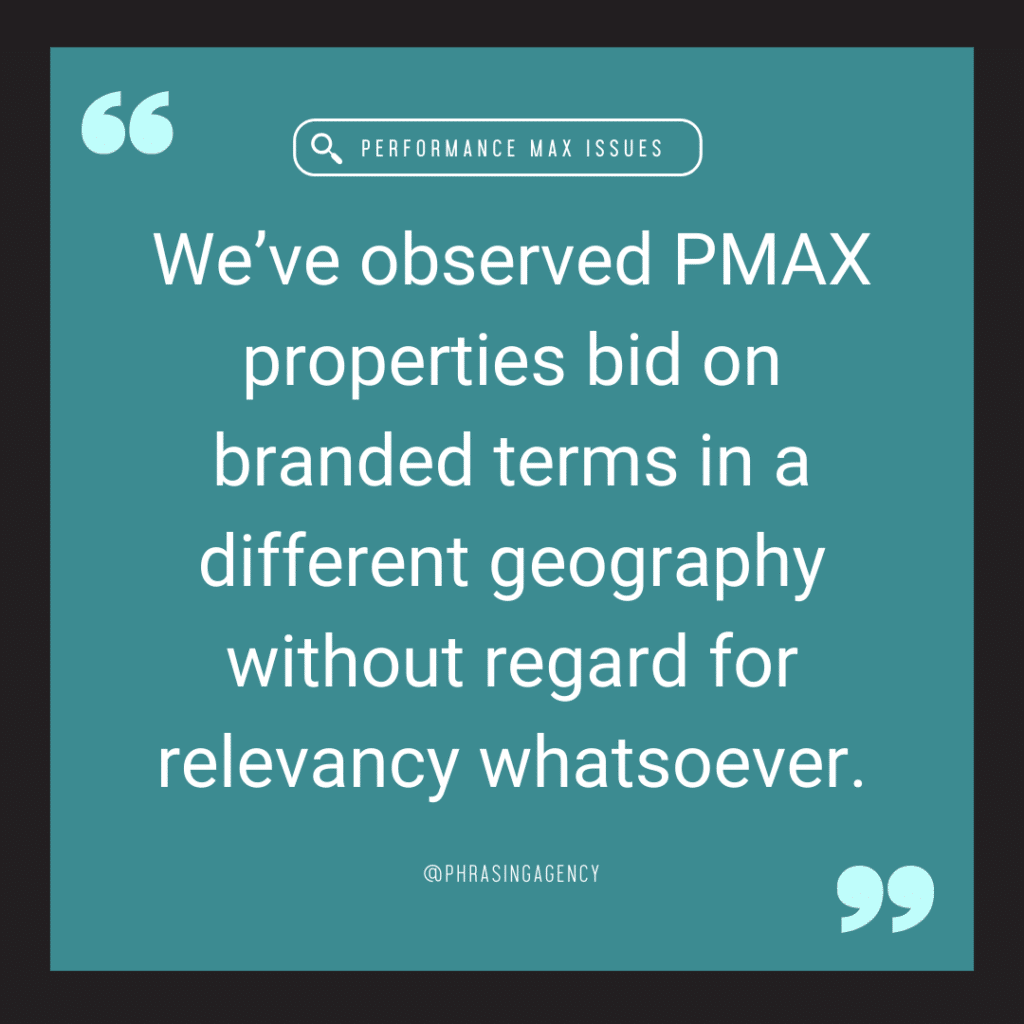Whenever Google drops a new product, every digital marketer has to see if this new product is one that we should use to augment or replace our current mix. Google has been leaning more and more heavily into the automated campaign space in recent years and, in 2023, we saw a heavy movement in this direction with the addition of Performance Max for Travel Goals. As a team that works with a lot of different partners in the travel and hospitality space, we wanted to take a long and hard look at this product that dropped in March 2023. Here’s what the team concluded.
What is Performance Max for Travel Goals?
Branching from the 2021 Performance Max (PMAX) product that Google reps who call you have been encouraging you to use, PMAX for Travel Goals is a specialized automated campaign that leverages placements in Discover, Gmail, YouTube, Google Search, Display, Maps, and Hotel Ads (still pending at the time of this publishing) to ‘boost’ incremental conversions. It is a bit of a set-and-forget product that allows Google to take control over much of your strategy in the name of increased conversion totals.
Our Position: PMAX is a Shortsighted Strategy.
Even on their official page, Google has stated that turning over your campaigns to Google increases your incremental conversions by 18% at a “similar cost per action” and we think that last bit is worth nothing. The only mention made of efficiency is that it allows marketers more free time to expand budgets and add new creative.
When you hand over your strategy to Performance Max, you lose control over:
- Landing Pages
- Ad Copy
- Creative Composition
- Pacing and Bidding
- Channel Optimization
- Campaign Reporting
By allowing Google to control everything, you cede the ability to create something that can be optimized as your needs change. The insights gained are gained by Google, not your business. In the name of increased incremental conversions, you lose the ability to be agile as your needs shift. You live and die by Google’s algorithms which are apathetic towards your success, at best.
PMAX automates what you can and should control.
To put it more frankly, Performance Max campaigns as a primary function are a solution for digital marketers who don’t want to put in the work to create campaigns that are unique to your property or your specific needs. It’s a gift for an agency’s profitability because managing budgets and letting Google make the decisions is significantly easier. (We refuse to ignore the unique needs of our clients like that.)
Nearly every automation that Google is offering through Performance Max campaigns, you can do yourself.

What are the benefits of PMAX campaigns?
When it comes to utilizing Performance Max for Travel Goals, Google has mentioned a few benefits. We can also see some others based on our own tests and feedback from our peers.
- Benefit from Google’s Macro Knowledge: There isn’t another provider in the world that has more insights than Google. Particularly if you don’t have a ton of great data to work from on a new account, you can use Google’s knowledge to boost performance. It’s a viable strategy.
- Reach New Customers via Audience Segments: A particularly intriguing aspect of Performance Max is their promise to reach new customers. Whether it be through macro intent, demographic details, or affinity models; the new audiences that Google chooses might be really valuable. You can use the data on users from PMAX campaigns to further develop your inherent knowledge of what your potential guest looks like.
As there are certainly some benefits to Google’s inherent knowledge and potential audience segments, that’s why we’d never support ignoring Performance Max and other automated optimizations completely. Even so, the use of these campaign types should be measured and used intelligently to increase marginal revenue, not automate your strategy.
Are there any negatives to PMAX for Travel Goals?
As you can tell from our position on PMAX in general, we do believe that the downsides outweigh the upsides in steering into a Performance Max-centered campaign.
- Lack of Refined Analytics: If you want to know what is performing well inside of your PMAX campaign, you might as well consult your horoscope. Google won’t tell you. They want you to stay in PMAX, not create a new campaign of your own.
- Higher Overall Costs: The goal of these campaigns (for Google) is to put you on every channel and bid on all possible real estate. That means higher costs, regardless of how each performs.
- Potential for Cannibalization: Since PMAX doesn’t take your other campaigns or the campaigns of any strategic allies into account, there is a high potential for cannibalization. (Side note: Who do you think Google will give credit for the conversion if possible?)
- Potential for Significant Waste: We’ve seen Google bid on terms that have zero relevance to the business in question. In one real-world example, a Florida limited-service hotel’s PMAX campaign was bidding on a brand term for all-inclusive properties in Cancun.
- Issues with Brand/Creative Continuity: When Google wants to take your creative and place it in a specific placement, they reserve the right to crop or edit it in order to place it there. This means that you could have an awkwardly cropped or otherwise edited in a way that doesn’t adhere to your brand or campaign guidelines.
- No Nuance in Messaging: The mantra of marketing has always been the right message to the right person at the right time. An automated ad with no consideration for where your target might be in the purchase decision or what seasonality might play into your campaigns that month means that you get cookie-cutter messaging for all of your potential guests. That’s the best case. The worst case is that your ads (during a test) are irrelevant and offputting.
In a world where you create campaigns that are both data-driven and needs-based, Performance Max isn’t a great overarching solution. If you’re low on time and data, PMAX can be a short-term solution to get things moving but, don’t count on insights from these campaigns to be that ‘insightful’ given their propensity to create waste.

Should We Trust Google Automated Campaigns?
This is perhaps one of the most important questions that we should ask ourselves as brand managers and digital marketers. How much can we trust Google to act in our favor and to what extent will they work to please their shareholders?
We should trust them very little and Google will do A LOT to make sure that we spend more, regardless of what that means. In 2023, Google openly admitted to adjusting the cost of advertising without informing marketers in order to meet revenue goals. They also admitted to switching the first and second-place bidders when it benefits them. If they’ll crank up the cost of auctions and switch the places for bidders based on their best interests, what do you think they’ll do if we hand them the reigns to our entire strategy? Bid as much as they can to increase their revenue without falling below our thresholds for what’s a campaign that is performing to a ‘satisfactory level’ overall.
Many ads professionals are sharing their dissatisfaction with Google overall and we’re not thrilled with what they’ve admitted to in court. While we think that the calls to leave Google are silly in this current landscape, we think that you should pause when people who don’t have your best interests at heart ask you to trust them completely with your money.
Google is a tool we use to help businesses perform. They are not our true strategic ally.


